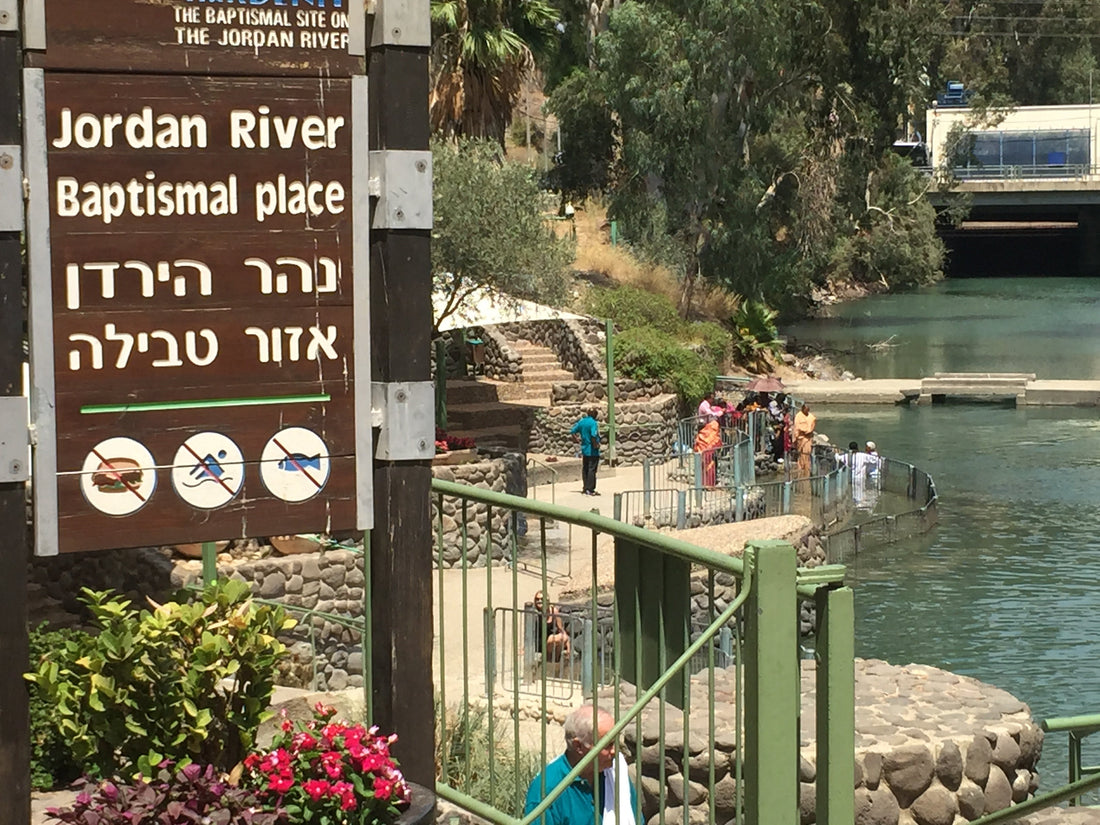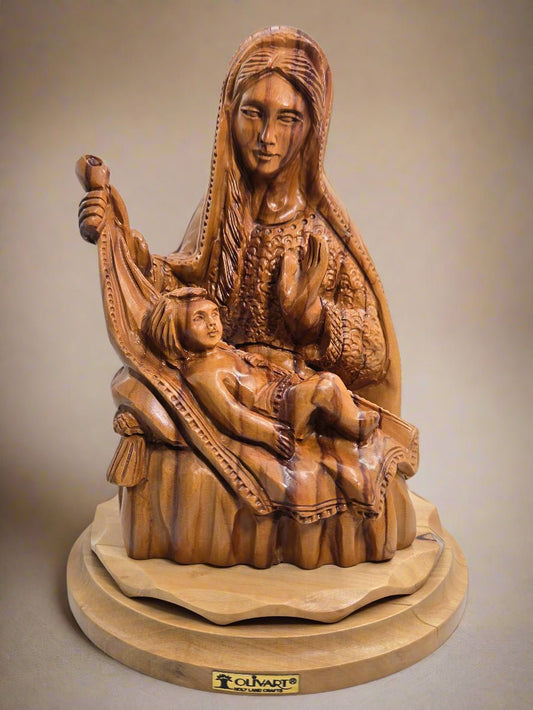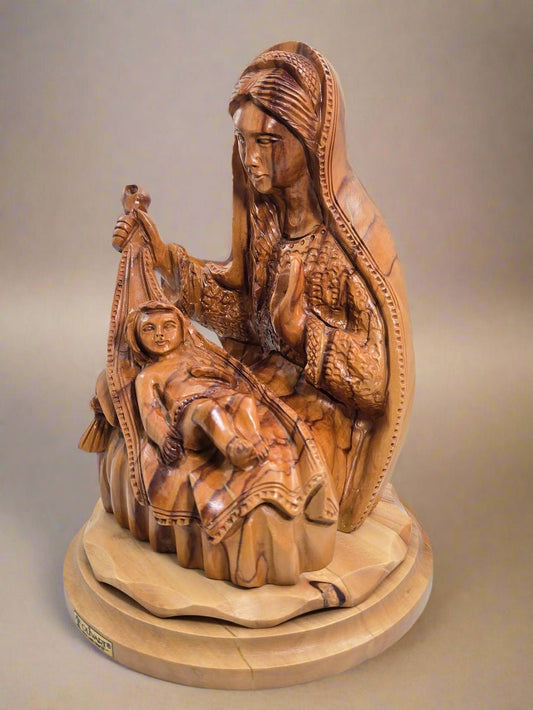
A River of Faith: The Enduring Legacy of the Jordan River and Its Sacred Baptismal Site
There are places on Earth that seem to hold the very echo of history, where the air itself feels thick with stories whispered on the wind. The Jordan River, as it meanders through the heart of the Holy Land, is one such place. It is more than just a ribbon of water; it is a current of faith that has flowed through the spiritual landscape of humanity for millennia.
To stand on its banks is to feel a connection to something ancient, something profound, a sense of being part of a story much larger than oneself. For countless pilgrims, the Jordan River is not merely a destination, but a spiritual homecoming. It is a place to reconnect with the very roots of their faith, to walk in the footsteps of prophets and saints, and to experience a tangible connection with the life of Jesus Christ.
The river's significance is not just etched in stone and ancient texts; it is written on the hearts of believers who travel from every corner of the globe to immerse themselves in its sacred waters.
Long before the arrival of Christianity, the Jordan River was already a place of great importance. It was here that the prophet Elijah, a towering figure in the shared history of the three great monotheistic faiths, is said to have ascended to heaven in a whirlwind. His successor, Elisha, performed miracles in its waters, healing the Syrian commander Na'aman of his leprosy.
These stories imbued the river with a sense of divine power and made it a place of spiritual cleansing and renewal.
With the coming of John the Baptist, the Jordan River's role in sacred history was forever changed. John, a fiery and charismatic preacher, chose the wilderness of the Jordan Valley as his sanctuary. He called upon the people to repent and to be baptized in the river's waters as a symbol of their spiritual cleansing.
It was to this very spot that Jesus of Nazareth came, a humble carpenter from Galilee, to be baptized by his cousin. As Jesus emerged from the water, the heavens were said to have opened, and a voice proclaimed, "This is my beloved Son, in whom I am well pleased." This singular event, the baptism of Jesus, marked the beginning of his public ministry and transformed the Jordan River into one of Christianity's most sacred sites.
In the centuries that followed, the site of Jesus' baptism, known as Bethany Beyond the Jordan or Al-Maghtas, became a major center of Christian pilgrimage. From the 4th century onwards, a succession of churches, chapels, and monasteries were built to accommodate the faithful who flocked to the river.
Archaeological excavations have unearthed the remains of these ancient structures, providing a fascinating glimpse into the lives of the early Christians who lived and worshipped here. The discovery of baptismal pools, hermit caves, and pilgrim guesthouses paints a vivid picture of a thriving spiritual community that endured for over a thousand years.
The fortunes of the baptismal sites ebbed and flowed throughout history. During the Crusader period, the area experienced a resurgence of pilgrimage, with tens of thousands of Christians visiting the river each year. However, in the centuries that followed, political instability and conflict made the journey to the Jordan increasingly perilous.
The once-thriving monasteries and churches fell into disrepair, and the flow of pilgrims dwindled to a trickle. Despite these challenges, the spiritual significance of the Jordan River never faded.
In the 19th and 20th centuries, a renewed interest in the biblical history of the Holy Land led to the rediscovery and restoration of many of the ancient sites. Today, the banks of the Jordan are once again alive with the sounds of prayer and song, as pilgrims from all over the world come to be baptized in the same waters where Jesus himself was baptized two thousand years ago.
For those who come to the Jordan River, the experience of baptism is a deeply personal and transformative one. It is a moment of spiritual renewal, a symbolic washing away of the old and an embrace of the new. To be immersed in the same waters that flowed over Jesus is to feel a profound connection to his life and ministry, a sense of being part of a continuous stream of faith that has flowed through the centuries.
The act of baptism in the Jordan is more than just a ritual; it is a powerful statement of faith and a recommitment to a life of spiritual purpose. For many, it is the culmination of a lifelong dream, a pilgrimage to the very heart of their beliefs. The water of the Jordan, carried home in small bottles by countless pilgrims, is treasured as a sacred relic, a tangible reminder of their spiritual journey.
Today, there are two main sites on the Jordan River where pilgrims can be baptized: the officially recognized UNESCO World Heritage site of Bethany Beyond the Jordan on the eastern bank, and the Qasr el-Yahud site on the western bank. Both sites offer a unique and moving experience, allowing visitors to connect with the spiritual heritage of the river in their own way.
Bethany Beyond the Jordan, with its pristine natural environment and extensive archaeological remains, offers a glimpse into the world of the early Christians. Walking among the ruins of ancient churches and monasteries, one can almost hear the echoes of their prayers and chants. The site's tranquil atmosphere and undeveloped landscape help to preserve the sense of wilderness that would have been familiar to John the Baptist and Jesus.
Modern facilities at the site include carefully designed walkways that protect the archaeological remains while allowing pilgrims access to the river. Baptismal ceremonies are conducted daily, with clergy from various Christian denominations available to perform the sacred rite.
Qasr el-Yahud, with its collection of historic monasteries and chapels, provides a tangible link to the long history of Christian pilgrimage to the Jordan River. The presence of so many different Christian denominations at one site is a powerful testament to the unifying power of faith.
Recent renovations have made the site more accessible to pilgrims, with new changing facilities and a wooden platform extending into the river for baptismal ceremonies. The site hosts thousands of visitors each year, particularly during the celebration of Epiphany when Orthodox Christians commemorate Jesus' baptism.
Regardless of which site one visits, the experience of the Jordan River is sure to leave a lasting impression. It is a place where the past and present converge, where the spiritual and the historical are intertwined. To stand on the banks of the Jordan is to be reminded of the enduring power of faith, the importance of tradition, and the timeless human quest for meaning and connection.
In a world that is often divided by conflict and strife, the Jordan River stands as a symbol of hope and unity. It is a place where people of all backgrounds and beliefs can come together to share in a common spiritual heritage. As the river continues to flow through the heart of the Holy Land, it carries with it a message of peace, reconciliation, and the enduring power of faith to transform lives.
As one recent pilgrim reflected after her baptism in the Jordan's waters, "I came here carrying the weight of my doubts and fears, but as I emerged from that sacred river, I felt as though I was stepping into a new chapter of my life. The water was cool against my skin, but my heart was warm with the presence of something greater than myself. In that moment, I understood that I was not just being baptized in water, but in two thousand years of faith, hope, and love."
It is a river of faith, a current of hope, and a timeless testament to the enduring legacy of the human spirit.
Visit our collection of items dedicated for Baptism and Related Gifts (Explore our Baptism Crafts)


